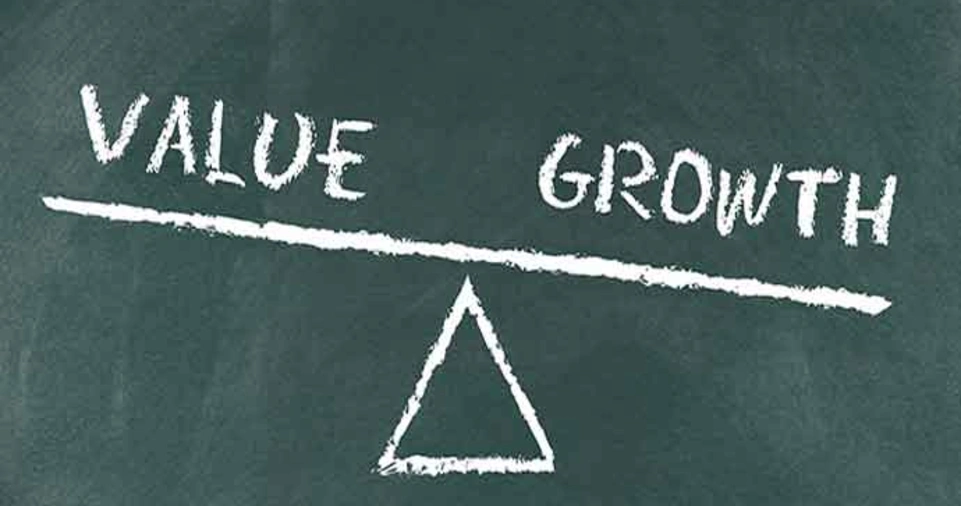Investing in the stock market comes with a critical decision: choosing between growth and value stocks. Both approaches have their merits and risks, and the right choice often depends on your financial goals, risk tolerance, investment horizon, and market conditions.
This guide will help you understand what growth and value stocks are, how they differ, and how to make the right decision for your portfolio.
What Are Growth Stocks?
Growth stocks are shares in companies expected to grow at an above-average rate compared to other companies. These firms typically reinvest their earnings to expand operations, develop new products, or penetrate new markets rather than paying dividends.
Key Characteristics of Growth Stocks:
- Higher-than-average earnings growth
- Little or no dividend payments
- High price-to-earnings (P/E) ratios
- Significant potential for capital appreciation
- Often found in technology or emerging industries
Examples: Tesla, Amazon, Nvidia, Shopify
What Are Value Stocks?
Value stocks represent companies that are trading below their intrinsic value. These are often well-established businesses that may be temporarily undervalued due to short-term issues or market sentiment.
Key Characteristics of Value Stocks:
- Lower-than-average P/E ratios
- Regular dividend payments
- Strong fundamentals (e.g., earnings, book value)
- Lower volatility
- Often found in mature industries like banking, energy, or manufacturing
Examples: Johnson & Johnson, JPMorgan Chase, Coca-Cola, Intel
Growth vs. Value Stocks: A Comparative Table
| Feature | Growth Stocks | Value Stocks |
|---|---|---|
| Earnings Growth | High | Moderate |
| Dividend Payments | Rare | Common |
| P/E Ratio | High | Low |
| Risk Level | High | Moderate |
| Typical Sectors | Tech, biotech, consumer tech | Finance, utilities, energy |
| Ideal For | Aggressive investors | Conservative investors |
Performance Over Time

The performance of growth and value stocks varies with market cycles. Growth stocks tend to outperform in bull markets and low-interest-rate environments when capital is cheaper. Value stocks often perform better during economic recoveries or periods of market correction.
Historical Context:
- In the late 1990s (dot-com boom), growth stocks outperformed.
- From 2000–2010, value stocks dominated following the tech crash.
- In the 2010s, growth stocks led again, driven by tech giants.
- Recently, value stocks saw a resurgence amid inflation and rising rates.
Key Metrics to Consider
When deciding between growth and value stocks, you should assess specific metrics:
For Growth Stocks:
- Revenue growth rate
- Earnings per share (EPS) growth
- Return on equity (ROE)
- Future earnings potential
For Value Stocks:
- Price-to-book (P/B) ratio
- Dividend yield
- Debt-to-equity ratio
- Free cash flow
Understanding these metrics can help you identify whether a stock is overvalued or undervalued, or whether it has the potential to deliver long-term growth.
Risk Considerations
Growth Stocks Risks:
- High volatility
- Overvaluation risk
- Market sentiment can drive sharp price swings
Value Stocks Risks:
- Value traps (stocks that appear undervalued but aren’t poised to grow)
- Slower appreciation
- Company-specific issues (e.g., outdated business models)
Investment Horizon and Goals
- Short-Term Goals: Value stocks might be safer for short-term needs due to their dividends and lower volatility.
- Long-Term Goals: Growth stocks can offer substantial returns over a longer horizon.
- Retirement Planning: A balanced mix might provide the best risk-adjusted returns.
Diversification Strategy
Rather than choosing strictly between growth and value, many investors opt for a diversified strategy:
- Blend funds or ETFs that include both types
- Allocate based on market conditions
- Adjust portfolio composition over time based on age and risk tolerance
ETFs and Mutual Funds Options
| Fund Type | Growth Focused Funds | Value Focused Funds |
|---|---|---|
| ETFs | QQQ, ARKK, VUG | VTV, SCHV, IWD |
| Mutual Funds | Fidelity Growth Company Fund | Vanguard Equity-Income Fund |
These funds allow exposure to a broader market segment without the need to pick individual stocks, making them ideal for passive investors.
Market Conditions and Timing

Market dynamics greatly influence the performance of growth and value stocks. Here’s how:
- Low Interest Rates: Favors growth stocks due to cheap capital
- High Inflation/Interest Rates: Value stocks typically perform better
- Economic Expansion: Growth stocks flourish
- Economic Recovery: Value stocks tend to bounce back
Understanding the macroeconomic environment helps you adjust your investment approach accordingly.
Behavioral Finance Insights
Investors often let emotions guide decisions, leading to poor outcomes:
- Overconfidence in growth stocks during bull markets
- Panic selling of value stocks during downturns
- Herd mentality during tech booms or busts
Being aware of these biases can help you make rational, evidence-based investment choices.
When to Rebalance Your Portfolio
It’s essential to periodically reassess your asset allocation:
- Annual reviews
- After major life events
- When your financial goals change
- In response to major market shifts
Rebalancing ensures your investment strategy remains aligned with your objectives and risk profile.
Conclusion
Choosing between growth and value stocks isn’t a one-size-fits-all decision. Growth stocks offer the potential for high returns but come with greater risk, while value stocks provide stability and income but may grow slowly. Your ideal investment mix depends on your financial goals, time horizon, and risk appetite.
For most investors, a balanced and diversified approach—adjusted over time—is the most prudent path. By understanding the key characteristics, metrics, and market influences of both stock types, you can build a smarter, more resilient portfolio.







